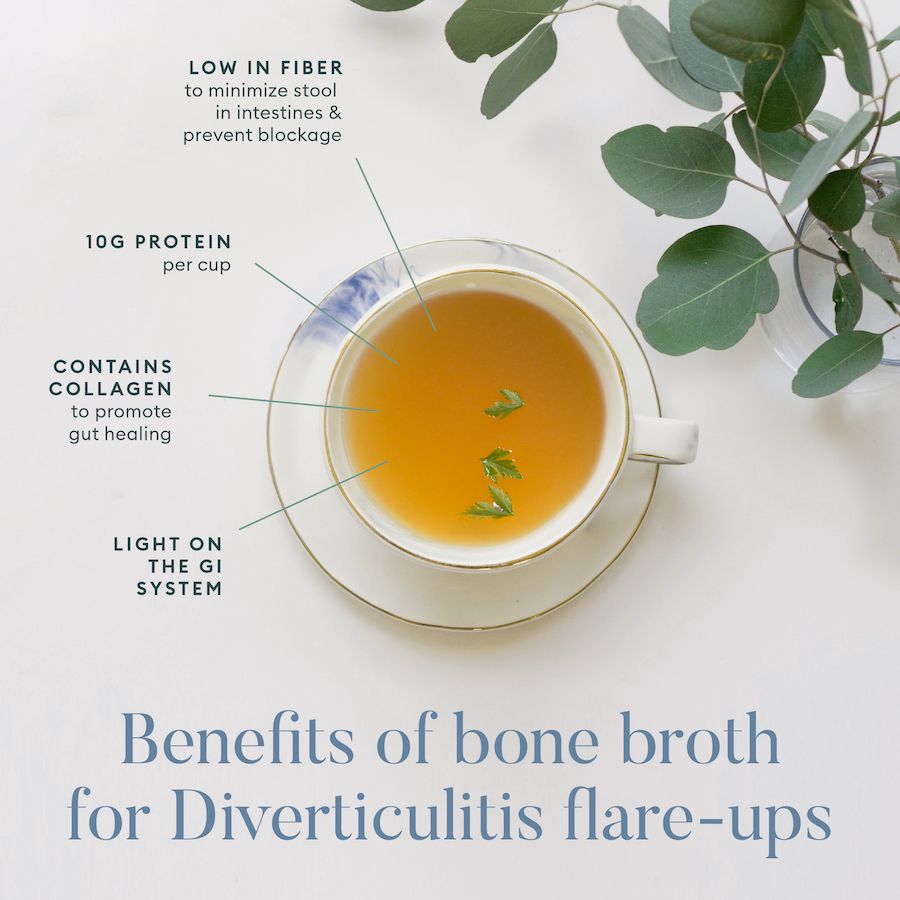If you have diverticulitis, you know how painful flare-ups can be. However, your nutrition choices can help you tame these unpleasant attacks, and keep them from ever coming back. Here’s how to effectively implement the diverticulitis diet for fewer flare-ups.
What is diverticulitis?
Diverticulitis is an inflammatory condition of the digestive tract. It starts when small, bulging pouches or sacs (diverticula) develop in the lining of the lower part of your colon. Though the underlying causes of diverticulitis are unclear, the pouches form when weak spots of the digestive lining protrude outward. This doesn’t always cause symptoms, but diverticulitis occurs when particles of stool or undigested food get stuck in diverticulum. Bacteria then starts to build, which leads to inflammation and infection. In some cases, diverticulum can even rupture.
When the sacs become inflamed, you’ll likely experience a range of unpleasant symptoms. “As the sacs grow, they put an increasing amount of pressure on the walls of the intestine, leading to pain, gas, abdominal discomfort, and other diverticulitis symptoms,” says Helaine Schonfeld, a nutritionist and health coach formerly at Parsley Health in New York City. Constipation, nausea, vomiting, and fever can also occur.
This onset of symptoms is often called a diverticulitis “flare-up” or “attack.” Abdominal pain, in particular, can last several days, according to the Mayo Clinic.
Certain diet and lifestyle choices can increase your chances of developing diverticulitis, including:
- Obesity
- Smoking
- Lack of physical activity
- A diet high in processed foods and low fiber foods
- Use of steroids, opioids, and/or nonsteroidal anti-inflammatory drugs (NSAIDs)
- Low-grade inflammation
- Gut dysbiosis, alterations in the gut microbiota
Your risk of diverticulitis also goes up after the age of 40, Schonfeld says. Still, research published in 2018 in the journal Acta Biomedica shows that diverticulitis is showing up in younger people as well.
In some cases, diverticulitis can cause serious complications, such as peritonitis (an infection that has spread to the lining of your abdomen and requires immediate medical attention) and rectal bleeding, according to Harvard Health. So, be sure to see your doctor right away if you experience any symptoms of diverticulitis.



